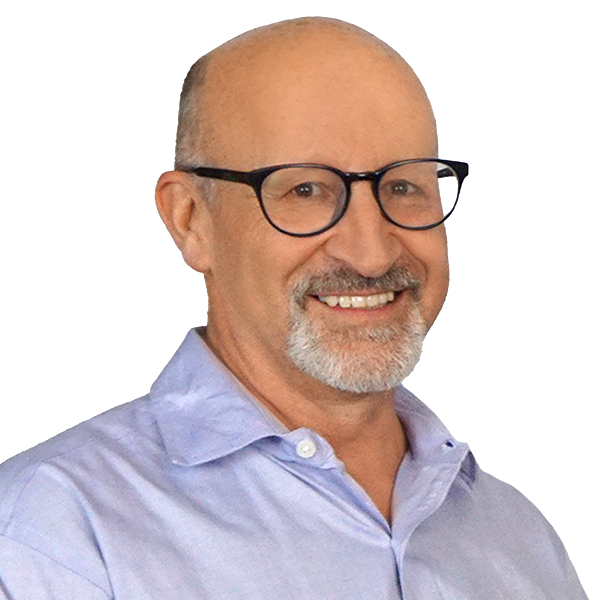You have /5 articles left.
Sign up for a free account or log in.
The University of Arizona’s 2020 purchase of the formerly for-profit Ashford University stoked controversy for many reasons, including faculty fears that buying a former for-profit college with a checkered past would damage the university’s reputation.
Perhaps no reason was greater than the fact that the arrangement would continue to deeply involve Ashford’s former parent company, Zovio, in running the newly formed University of Arizona Global Campus. Under the deal, Zovio, which had come under scrutiny from accreditors, federal officials and California’s attorney general for an allegedly checkered history of enrollment and financial practices, continued to provide enrollment, marketing and student services to UAGC in exchange for a 19.5 percent cut of tuition revenue for the first 15 years of the deal.
The model, similar to the arrangement Purdue University struck with Kaplan when it transformed Kaplan University into Purdue University Global in 2017, raised the hackles of consumer advocates who asserted that UAGC was compromising itself and its students by outsourcing much of the online program’s operations to the publicly traded Zovio.
Today, Arizona took what it hopes is a major step toward re-establishing control over its new online arm and easing that one major objection to its partnership by announcing that it was buying the online program management assets of Zovio and incorporating its operations and employees into the university.
“By terminating the OPM agreement, yet bringing key personnel and systems into UAGC, we ensure that all personnel at UAGC are aligned toward a single purpose—the success of our students—and toward our mission to serve working adults and advance their social and economic mobility by offering a fair-priced, high-quality university degree,” Paul Pastorek, president of the University of Arizona Global Campus, said in the news release.
“This really severs our present from the past,” Pastorek said. “The [U.S.] Education Department believes that having such a large part of the business as a for-profit is unseemly. This change takes away the angst that the department has.”
In making this decision, Pastorek said university officials had recognized the “inherent conflict” that arises when colleges and universities contract with outside companies to launch and operate their online academic programs.
“Our arrangement with Zovio was built on a model that valued new enrollment,” Pastorek said, adding that revenue-sharing arrangements tend to lead online program management companies to be “almost solely focused on new enrollment,” with little incentive to focus on whether students persist in programs.
Monday’s announcement left many past critics of the UAGC-Zovio relationship unsatisfied.
“You don’t build a solid initiative on a porous, corrupted foundation,” said Gary Rhoades, educational policy studies and practice professor at the University of Arizona. Rhoades said he was “somewhat amused” when he heard that Pastorek had acknowledged the “inherent conflict” in the UAGC-Zovio relationship, as faculty and staff members had been vocal about their concerns about the arrangement from the start.
“The University of Arizona Global Campus is neither global nor campus, and it’s not really the University of Arizona … although we sold them our name,” Rhoades said.
Policy experts who’ve analyzed the partnerships between colleges and external companies in operating online programs offered mixed assessments of UAGC’s decision.
One of the harshest critics of online program management companies, Robert Shireman of the Century Foundation, said that bringing the management of its online programs in-house could help UAGC exercise greater control over potential practices that have led to Zovio’s (and Ashford’s) predatory behavior in the past. He also said it removed some of the profit motive underlying the partnership.
“It’s like wearing your seat belt,” said Shireman, director of higher education excellence at Century, which has blasted OPM relationships in several reports. “There might still be a problem, but you have better chances of getting to your destination.”
But Shireman lamented that officials in Arizona didn’t recognize the “inherent” nature of the problem years ago. “Sometimes the arrogance of university leaders gets the best of them, and that seems to have happened in in this case.”
Flawed From the Start?
Arizona’s purchase of Ashford and its relationship with Zovio was, for many critics of higher education’s entanglements with for-profit entities, the prime example of what’s wrong with such alliances. That’s mostly because Ashford and Zovio were at various points over the last 17 years seen as the poster children for for-profit online education gone awry.
Ashford emerged in 2005 when Bridgepoint Education, the company that would eventually become Zovio, bought Franciscan University of the Prairies, a religious college in Iowa that was on the verge of closure. The sale was one of the first in which a nonprofit college’s regional accreditation transferred as part of the purchase.
Over the next 10 years, Bridgepoint launched a takeover of Ashford that became exhibit A of one of the perceived questionable tactics of for-profit higher education: the “buying” of accreditation, by annexing an existing institution and transforming it into something very different (almost always online, and usually on a mass scale—Ashford peaked at 90,000 students). The small Iowa campus became a springboard for a publicly traded college company with (at one point) soaring online enrollments and significant profits, drawing the enmity of U.S. senators and prompting significant scrutiny of the accrediting agency that approved the initial transaction.
In 2018, Ashford again became an exemplar of a trend: for-profit colleges seeking to convert to nonprofit status. The companies portrayed the moves as enabling them to better serve students and be more sustainable, but critics like the Century Foundation criticized some of those moves as being attempts by for-profit owners to escape federal regulations, which tend to be tighter on for-profits, especially when Democrats are in charge of governments.
In most of those arrangements, the colleges themselves were spun off as nonprofit institutions from holding companies that remained for-profit, and the companies continued to provide a range of services to the institutions—whether they remained freestanding or were purchased by public universities, as in the case of Purdue and Kaplan.
Arizona characterized its purchase of Ashford for $1 in 2020 as an attempt to catapult it into the realm of a major educator of adult students online, as the university went from having a few thousand students studying virtually to absorbing Ashford’s roughly 35,000 students overnight. A key part of the deal was that Zovio would remain deeply involved in running the new institution’s online programs—managing marketing, student recruitment and retention, student success, coaching, financial services, instructional design, and technology. Faculty members were to retain ownership of course curricula and lead decisions about programs and courses the university offers.
The way the contract between the University of Arizona Global Campus and Zovio was structured, the nonprofit institution would share 19.5 percent of its tuition revenue with Zovio, while Zovio would guarantee UAGC $225 million in revenue over 15 years and reimburse it for operating costs.
In many ways, the timing could not have been worse: postsecondary enrollments of all types began tanking in fall 2020, due first to the pandemic and the associated recession and then to the improving economy and job market. Adult learners like those served by Arizona Global were especially likely to choose work over education.
The enrollment declines at UAGC contributed to a significant decline in the value (and threatened the viability) of Zovio, which remained on the hook for the university’s expenses but left it without significant revenue from enrollment. The company announced in May that it would consider selling off its various parts, which include the boot-camp provider Fullstack and TutorMe, an online tutoring service.
In addition, a California judge ruled against Zovio and the former Ashford in March in a lawsuit brought by the state’s attorney general, requiring Zovio to pay $22 million for encouraging students to enroll by giving them misleading information about cost and financial aid, job market outcomes, the pace of degree programs, and transfer credits. Zovio said it would appeal that ruling.
Zovio said in a quarterly earnings statement Monday that revenue from its online program management business—essentially its relationship with UAGC—had dropped by 27 percent in the first six months of this year. Randy Hendricks, who became CEO of Zovio last winter, said Monday that the company did not see a clear path to making the arrangement with UAGC profitable.
Arizona Global Campus’s Decision
Zovio’s troubles and continued scrutiny from accreditors and federal officials put UAGC in a bind. Some thought the university might seek to exit its relationship with Zovio, and Pastorek said UAGC had explored that option.
“But if I were to terminate them, I don’t have the kind of marketing department, enrollment department, student services department we need,” he said. That left two options, he said: “Go find another [online program management company], or acquire [Zovio’s] assets and the people I want from them, in a way that will be seamless.”
Pastorek said that as he talked to other OPM businesses, it became clear to him that “they are always going to have some different objective from mine,” because of the “inherent conflict” that they have to “generate a profit” and because they are compensated based on how many students they enroll.
That sounds a lot like what critics like Rhodes and Shireman have long said about such partnerships, including Arizona’s.
“The university was aware of the potential conflict, but I think the view was that we were going to be able to manage against this conflict,” Pastorek said. “I think it was a reasonable risk to go forward.” He said UAGC had worked with Zovio to change its leadership and prod the company to focus more on retaining students, such as by guiding students to apply for federal student aid when they enroll, rather than waiting until they prove themselves (or not) by completing a free three-week program.
But the underlying economics of the arrangement made continuing it untenable, and faced with entering another such OPM relationship or creating a new arrangement in which Arizona Global would bring Zovio’s services and employees in-house, the choice was clear, Pastorek said.
Pastorek said he knew that some critics might see it as a “terrible idea” to hire Zovio’s employees, given that the company’s staff members have been found in the past to have misled students. He said Arizona Global has helped to supervise the Zovio employees working on UAGC’s programs for 18 months, and that it would make wise decisions about which ones to hire. And under the university’s stewardship, he said, the former Zovio employees will have the “right” incentives.
Outside analysts said it would be some time before it was clear whether changing the structure would change the behavior that landed Zovio and UAGC’s predecessor, Ashford, in hot water with regulators.
“This is a structural change,” said Kevin Kinser, professor and head of the department of education policy studies at Pennsylvania State University’s Center for the Study of Higher Education. “It depends on the leadership that’s overseeing this now” whether bringing it under the supervision of UAGC “somehow changes what the dynamic is and what the incentives are for the performance of that unit.
Kinser and others credited Pastorek and UAGC for acknowledging that the Zovio relationship “did not align” with their values, saying they “ended up saying, ‘Yes, the critics were right.’”
“This is the exact same question that every single university that contracts with an OPM should be asking itself: Does this align with our mission and values?”









